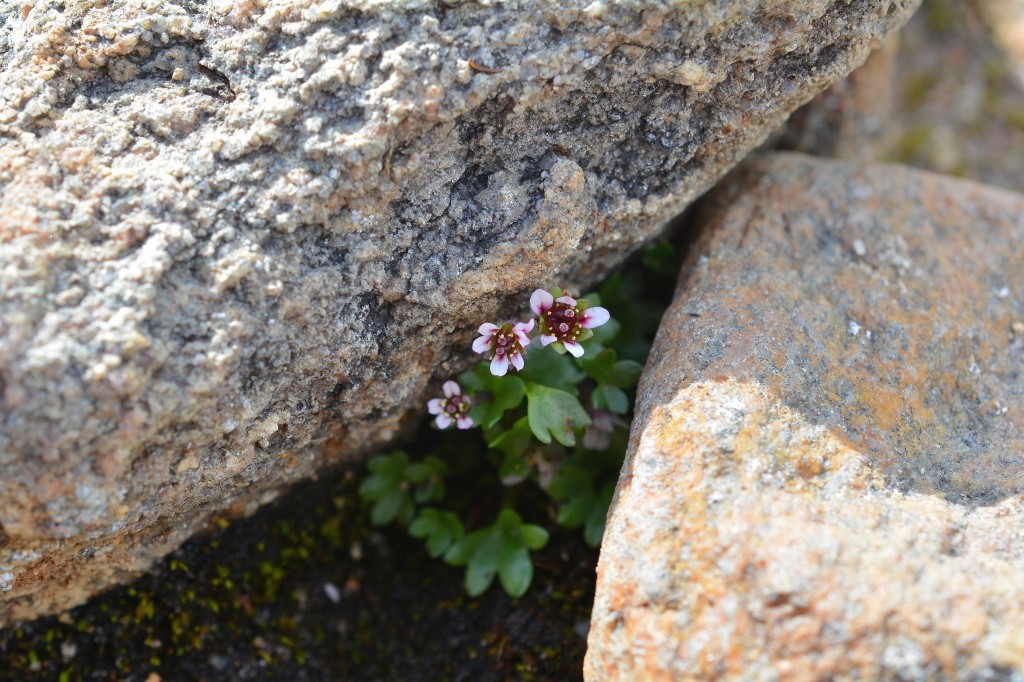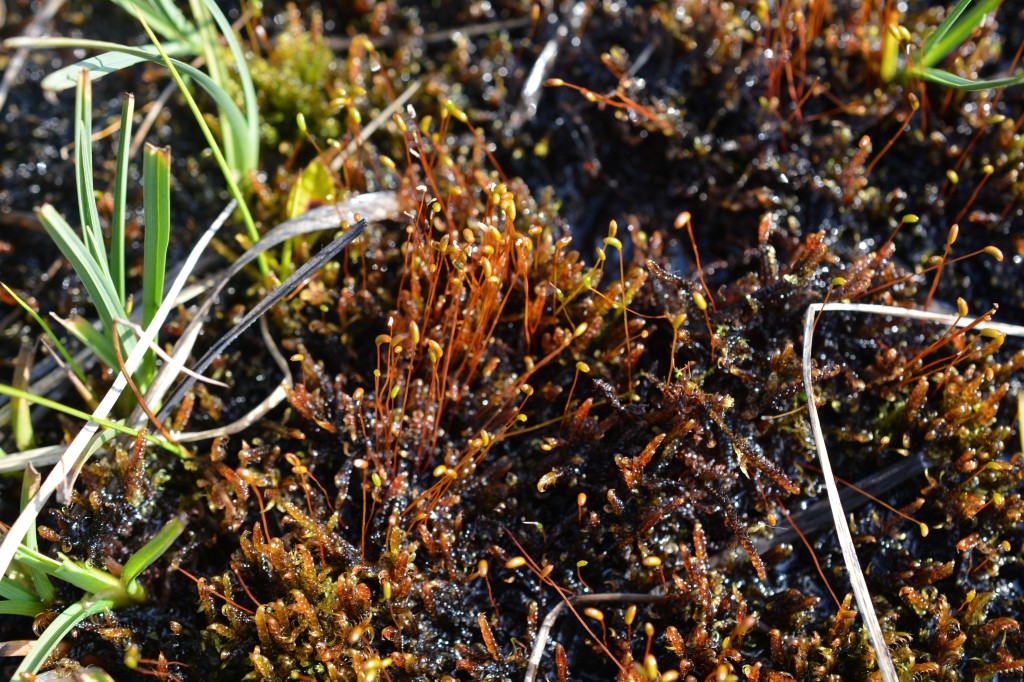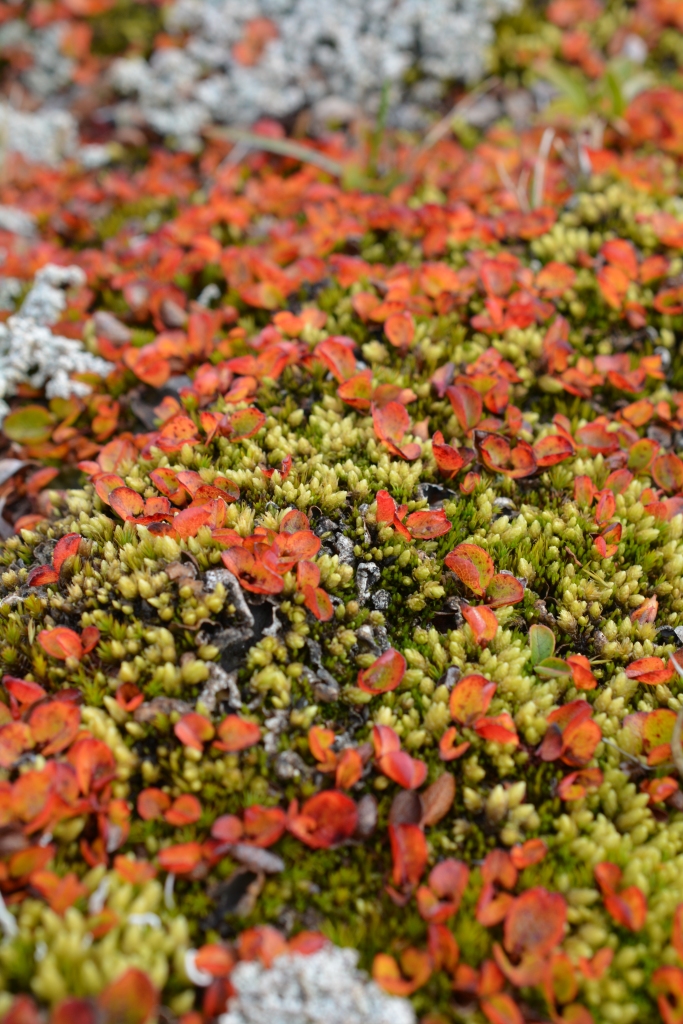Gratitude first: thank you to the community of Kangiqtugaapik [Clyde River] and the Government of Nunavut for welcoming us in uncertain times. Thank you to Leeno Apak and Jaypiti Inutiq for keeping us safe, to Stéphane Caron and Louis André Grégoire for keeping us flying, and to Patrick Graillon, Caroline (Kaalai) Ipeelie, Leesee Papatsie, and Alan Cormack for making things happen. Back in Gatineau, we are grateful to Lyndsey Sharp, Jennifer Doubt, Troy McMullin, and Cecelia Eason. This fieldwork was conducted in partnership with Nunavut Parks and Special Places and in collaboration with Polar Knowledge Canada.

Maybe you know the feeling? Your breath is ragged, your legs are burning, your pack is tugging at your shoulders, but then you crest a hill and suddenly the horizon leaps away. Or maybe you’re sitting in a helicopter or plane, feeling the floor pitch under you as you slide into the sky. Or maybe you know the excitement of finding an elusive plant species underfoot—the greatest thrill of all!

OK, so maybe that last part applies mostly to my colleagues and I, but all the same, the memories of past travels definitely seem stronger as you look forward to your next trip. As the museum’s botany team gears up for a new summer of work in the lab and in the field, we are also continuing to work through the plants and lichens we collected in Agguttinni Territorial Park on Baffin Island, Nunavut, in summer 2021. Identifying and processing these specimens will help museum scientists and park managers quantify the biodiversity of this protected area, and working with the specimens every day keeps those field memories fresh.
While the story of any field season never begins with stepping on a plane, our 2021 collecting trip didn’t even begin with our regular touchpoints of permit applications and gear prep. For me, it began with a shot in the arm at an Ottawa arena. By following safety protocols set out by the Government of Nunavut and the museum, our Ottawa-based team—Lynn Gillespie, Geoff Levin, and myself—prioritized safety above all else during the pandemic. Several weeks later, we caught that northbound flight, and after a stopover in Iqaluit, arrived in Kangiqtugaapik (Clyde River). After meeting up with the last two members of our group, Jaypiti Inutiq and Leeno Apak, we packed ourselves and our gear into a red helicopter and made the first of many hops into the park.

Over the next five weeks, we established four temporary base camps across the park and fell into a comfortable rhythm. From our temporary home on the tundra, we would walk or fly out across the land searching for habitats that could harbour different plant and lichen species. We collected a representative specimen of all the taxa we encountered to document the botanical diversity in the park.
By the end of the trip, our team had walked over 230 km and climbed 770 floors (the equivalent of climbing Chicago’s Willis Tower 7 times). These hikes took us through spectacular mountain passes (like Atagulisaktalik where large granite peaks tower overhead as spongy moss springs under your feet) and through sandy, rich river valleys at the heads of long fiords. Helicopter trips brought us to interesting habitats farther afield, from the gravelly plains at the base of the Barnes Ice Cap to sandy, wave-lapped beaches on the shores of Baffin Bay.
In camp, sustained by tea, coffee, and delicious Arctic char, we alternated between the necessities of living (cooking, dishes, staking out your tent in fierce winds, etc.), and pressing our collections to create two sets of preserved specimens: one for Nunavut Parks and one to deposit in the museum’s National Herbarium of Canada.

Those 1,000+ specimens, the ones we are poring over now as we write a synopsis of the park’s biodiversity, include over 800 vascular plants (those with roots and shoots), over 150 lichens, and a sampling of small and beautiful Arctic mosses. These include voucher specimens from a community open house and Inuit Qaujimajatuqangit workshops we participated in back in Kangiqtugaapik. Facilitated by Caroline (Kaalai) Ipeelie from the Government of Nunavut, these workshops brought together Elders from the community to discuss their deep knowledge of plants in the park, which will guide Nunavut Parks with management and interpretation in Agguttinni.
Now back at the museum’s research facility in Gatineau, these specimens are in the capable hands of our collections team and co-op student Cecelia Eason, who is mounting and imaging them so the specimens and data can be mobilized for multiple research projects. In the future, anyone interested in the biology of this unique and special protected area will be able to learn from these flat plants and the labels attached to them. Working with these specimens now, I’m easily transported to the recent past, where my mind’s eye takes me to vast fiords, sinuous eskers, and steep mountains—the memories of a time well spent with amazing colleagues.







